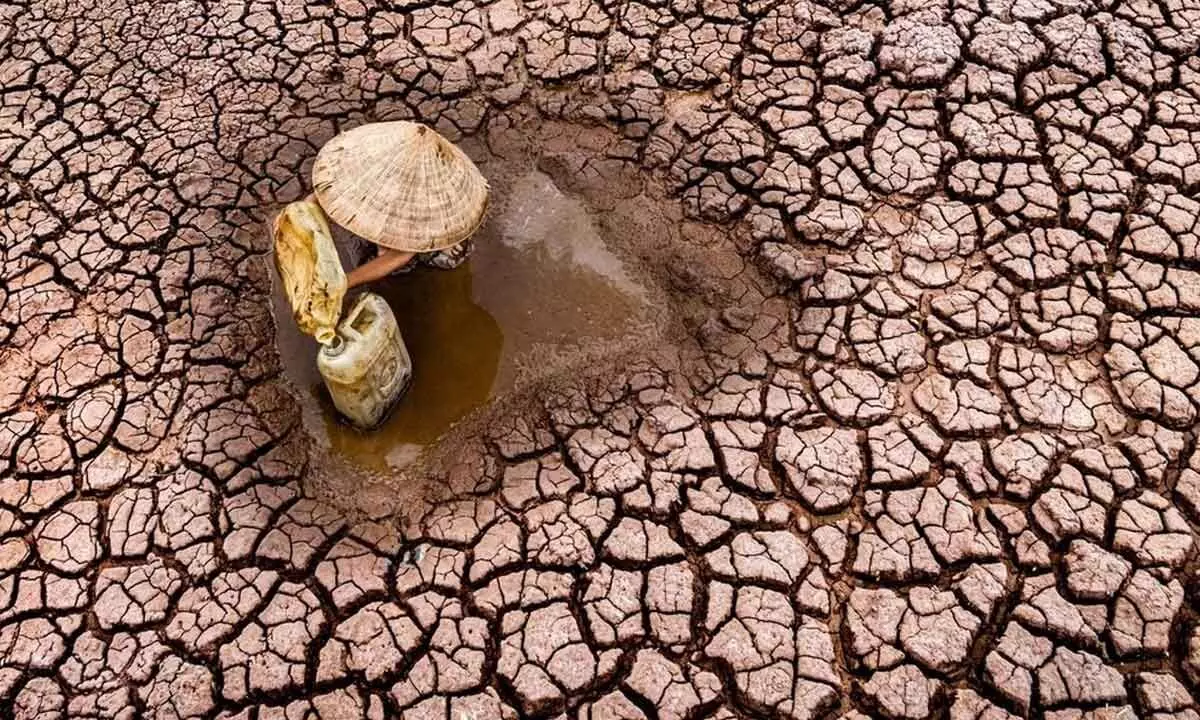Water crisis threatens the economy, solution requires political will
image for illustrative purpose

The warning sounded by Moody’s Ratings that India’s growing water deficit can disrupt farm and industry sectors is something that the government can ill-afford to ignore. Water shortages all over the country are part of the environmental crisis that we are facing. It is no longer a local issue that has erupted because of corrupt and inefficient local administrative bodies. India is facing a growing water shortage as consumption increases amid rapid economic growth and rampant natural disasters due to climate change, says Moody’s report on the environmental risk that India faces. Less water supplies not only disrupt agricultural production and industrial operations, resulting in inflation in food prices and declines in income, but also triggers social unrest and politicking. Delhi Water Minister Atishi went on an indefinite hunger-strike on the issue. The water crisis, which has stemmed from environmental degradation, is multifaceted. It emanates from a mix of causes like rapid (and often illegal) urbanization, improper treatment of solid and liquid waste, untreated industrial effluents, air pollution, unsustainable agricultural practices and climate change.
It is not that the government is unaware of the problems related to the environmental crisis, and even what Moody’s latest report said. According to the Composite Water Management Index (CWMI) report by NITI Aayog, “As the water crisis worsens, production capacity utilization and new investments in capacity may both decline, threatening the livelihoods of millions, and commodity prices could rise steeply for consumers due to production shortages. Such circumstances can lead to economic instability and disrupt growth.” That was in 2019 and its 2023 report CWMI pointed out that water scarcity was a “national problem,” highlighting the decreasing average annual per capita water availability. It fell to 1,486 cubic metres per person per year by 2021 from 1,545 cubic metres per person per year in 2011. Both cities and villages are suffering from groundwater depletion at alarming rates. Worse, surface water sources like rivers and lakes are badly polluted, further reducing the availability of clean water. The impact on agriculture can scarcely be overemphasized. Industry, especially sectors that are water-intensive, also stands to suffer because of inadequate supply. This will lead to higher costs, lower production efficiency, and potential supply chain disruptions.
Moody’s report and warnings by experts should be taken seriously and addressed immediately by policy makers. Drastic situations, they say, call for drastic measures. The ‘chalta-hai’ attitude, which results in tolerating inefficiencies and corruption in the system, has to be discarded with immediate effect. Since water shortage is part of the overall environmental crisis, the solution should be holistic and targetted at checking ecological degradation. Specifically, efforts need to be made so that the farm sector, the biggest consumer of water, becomes more efficient in usage of water. Modern techniques like drip irrigation should be ardently promoted. More importantly, bad practices like growing water-intensive crops in arid regions should be stopped or discouraged. Further, there should be much greater effort to recycle used, including sewage, water. This will also make water bodies cleaner and enhance availability of more potable water. All these do not require much costs or state-of-the-art technology. All it needs is the intent to go about the task.

